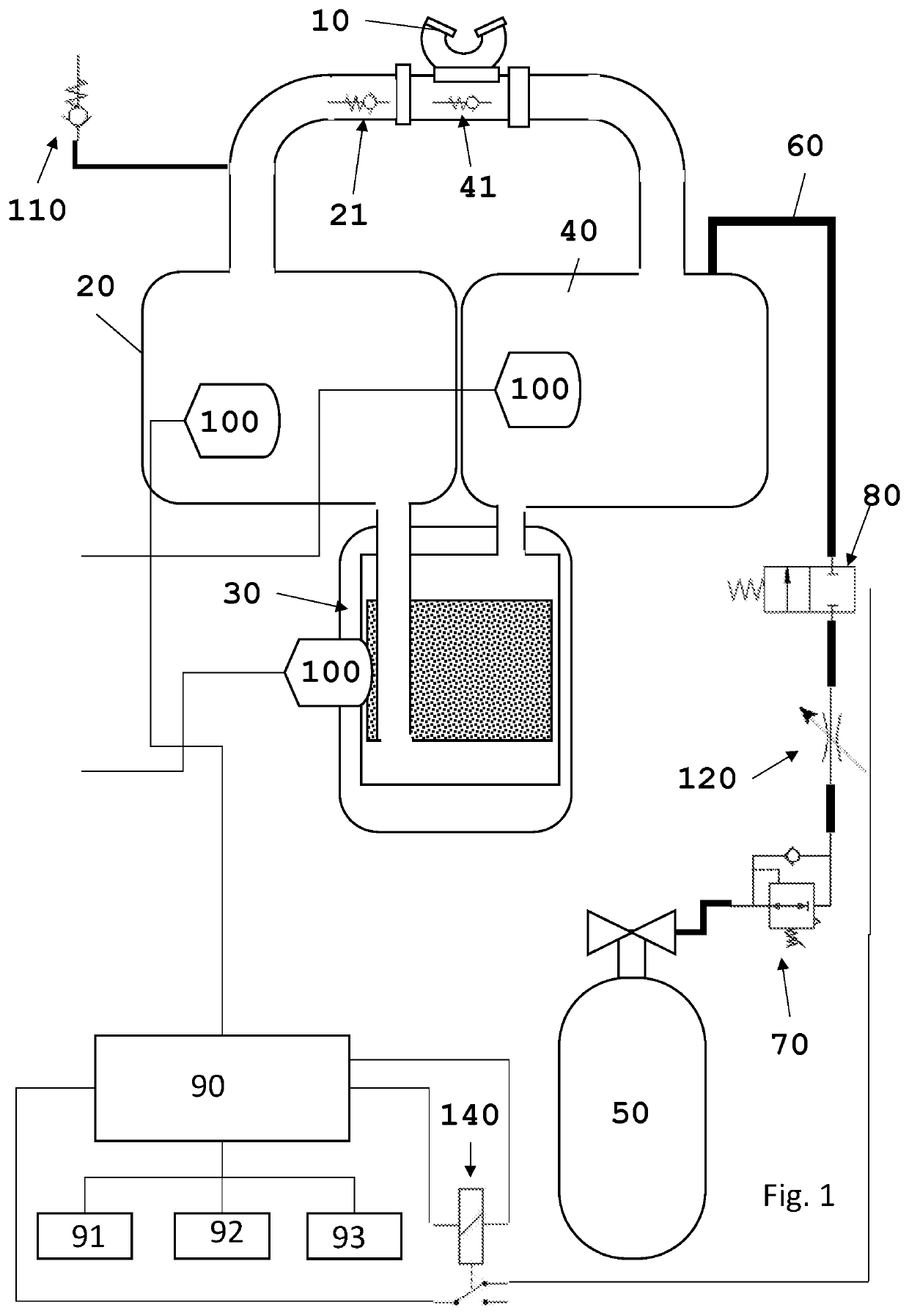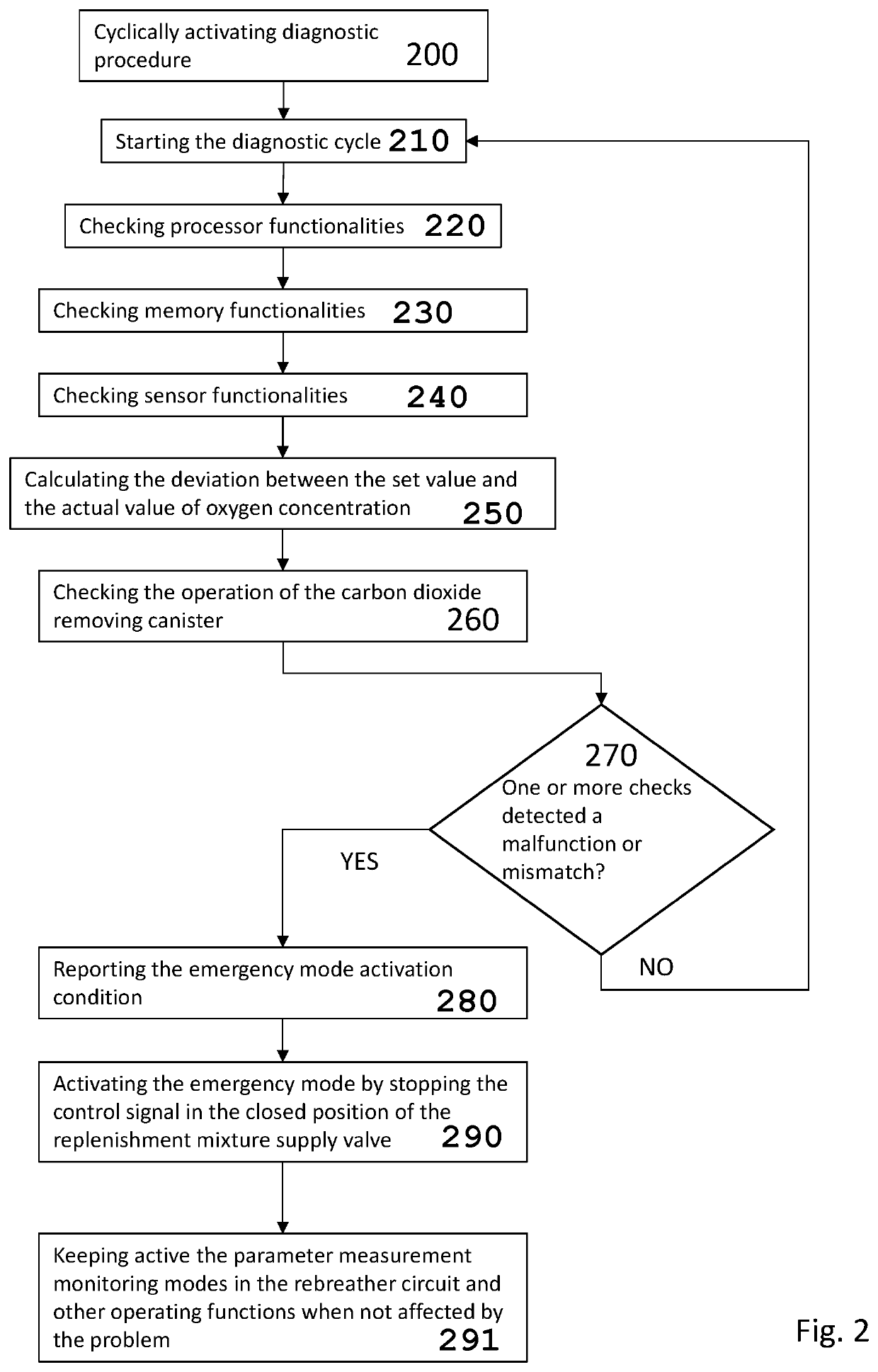Rebreather system
- Summary
- Abstract
- Description
- Claims
- Application Information
AI Technical Summary
Benefits of technology
Problems solved by technology
Method used
Image
Examples
Embodiment Construction
[0069]In FIG. 1 a semi-closed-circuit rebreather system is schematically shown. The user inhales and exhales through a mouthpiece 10 a breathing gas mixture contained in a circuit. The mouthpiece 10 has a connecting branch to a first breathing bag 20 into which exhaled air is injected. A non-return valve 21, during the inhalations, prevents the previously exhaled breathing gas mixture from being inhaled from the first breathing bag before being treated in the carbon dioxide removal unit 30 and before the oxygen content consumed during the previous inhalation / exhalation is replenished.
[0070]The output of the first breathing bag 20 communicates with the canister for removing carbon dioxide and the gas mixture, from which carbon dioxide has been removed, is supplied to a second breathing bag 40.
[0071]A tube 60 to supply a gas mixture replenishing the oxygen level in the breathing gas connects the second breathing bag 40 with a cylinder 50 containing a predetermined amount of said reple...
PUM
 Login to View More
Login to View More Abstract
Description
Claims
Application Information
 Login to View More
Login to View More - R&D Engineer
- R&D Manager
- IP Professional
- Industry Leading Data Capabilities
- Powerful AI technology
- Patent DNA Extraction
Browse by: Latest US Patents, China's latest patents, Technical Efficacy Thesaurus, Application Domain, Technology Topic, Popular Technical Reports.
© 2024 PatSnap. All rights reserved.Legal|Privacy policy|Modern Slavery Act Transparency Statement|Sitemap|About US| Contact US: help@patsnap.com









